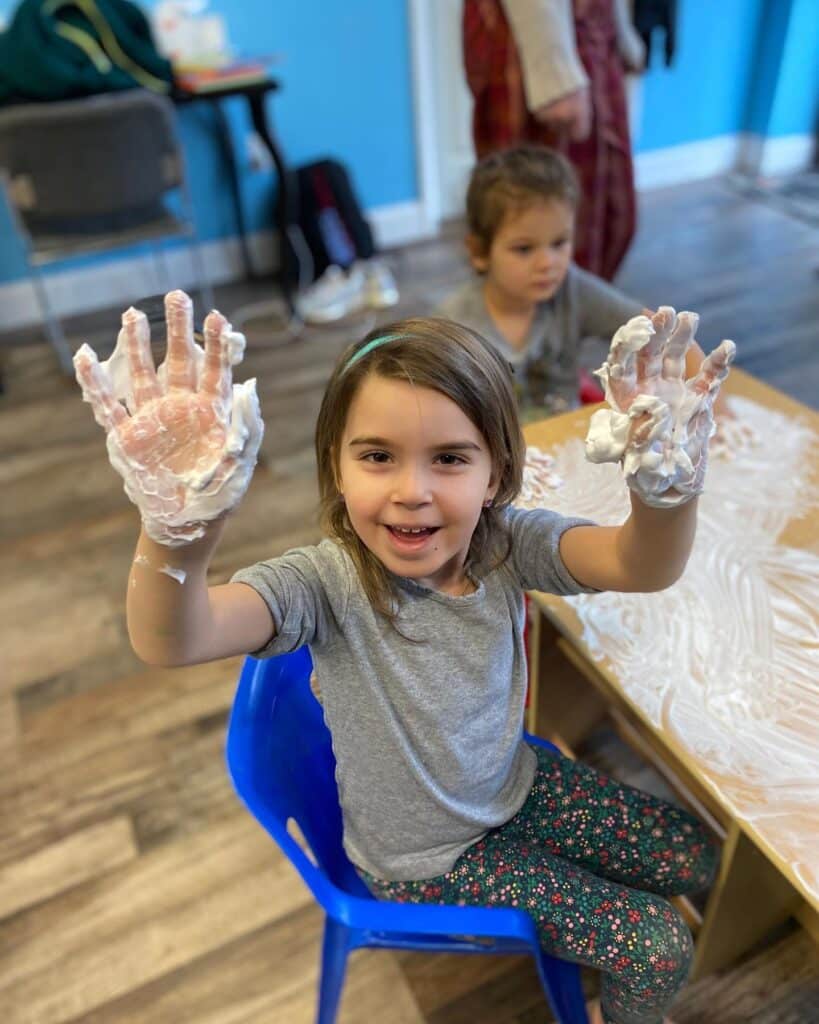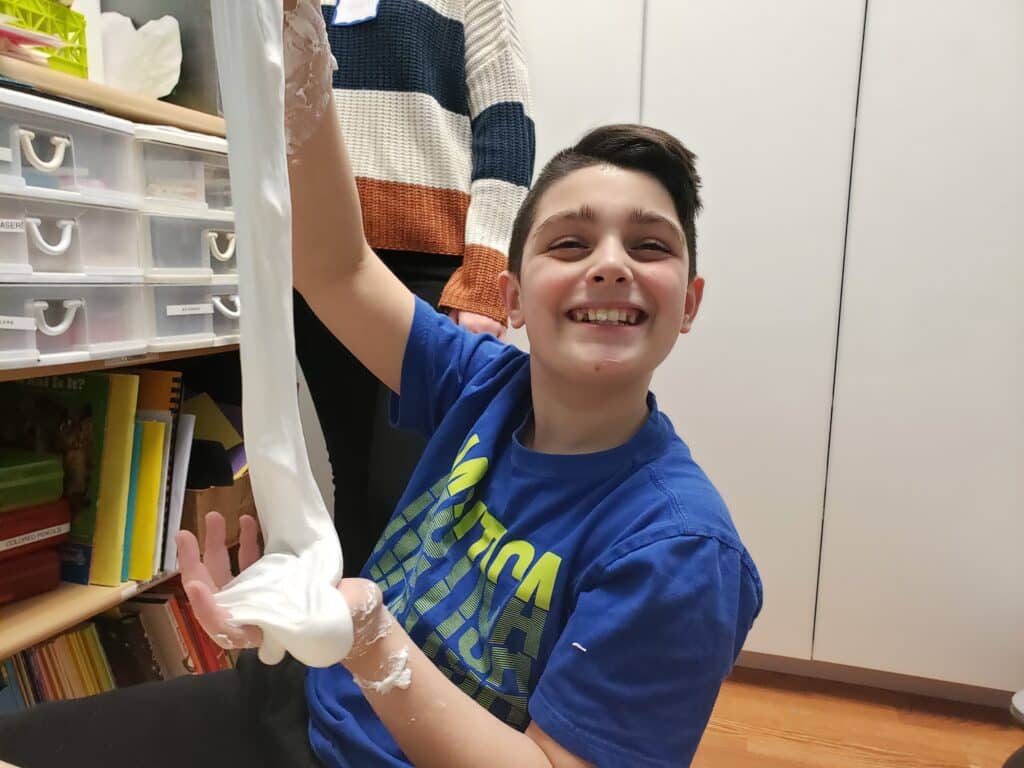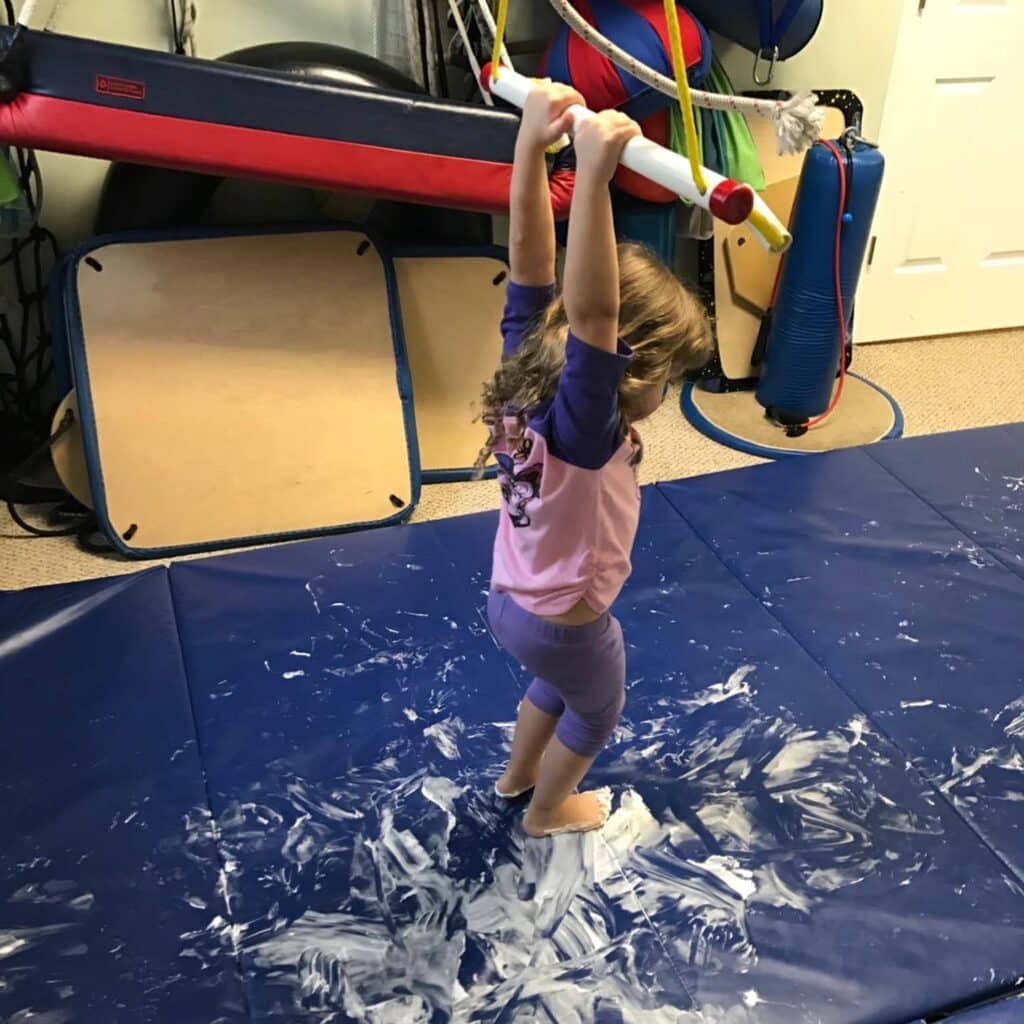Pediatric Sensory Integration
Located in Massapequa & East Northport, NY
Our team at Sensational Development has exceptional experience in advanced sensory integration. We have been committed to helping families in our community for over 15 years to empower children, teens, and young adults to reach their fullest potential for success in life.
Give your child the opportunity to become sensational! Call us at (516) 799-2900 or reach out to us online to schedule an appointment with our compassionate team.
What Is Sensory Processing Disorder?
Sensory Processing Disorder (SPD) affects how a child’s nervous system processes and responds to sensory information from their environment. This includes anything they can feel with their senses, such as flavor, texture, sound volume, temperature, and much more. SPD affects children in various ways, but one common aspect of this condition is that it can lead to challenges in daily life.
Children with SPD may experience overstimulation, where they are extremely sensitive to sensory information; or they may underreact to sensory information and even seek out more extreme sensations. This can make it difficult for them to take part in daily activities and interact with their surroundings effectively.


What Is Sensory Integration?
Sensory integration is an evidence-based approach that aims to help children with sensory processing challenges. A child’s reflexes and their ability to process sensory information is vital for their overall development. Without this ability, children can struggle with fine and gross motor skills, learning, making friends, and so much more.
Sensory integration is designed to improve a child’s ability to process and respond appropriately to sensory information. Through specialized activities and exercises, our team helps children reach their developmental goals with ease.
Signs Your Child May Need Sensory Integration
Here are common signs that may indicate your child could benefit from sensory integration:
Extreme sensitivity to sensory information
Constantly seeking more extreme sensations
Trouble regulating their emotions
Poor vision or visual tracking skills
Difficulty with hearing, especially in noisy places
Trouble handling changes in routine
Challenges with paying attention
Struggles with feeding due to “picky” eating habits
Avoiding certain foods, activities, clothes, etc.
Developmental delays
Appears clumsy or uncoordinated
Why Choose
Sensational Development
For over 15 years, our team at Sensational Development has helped families with compassionate sensory integration services in Nassau County and Suffolk County. Our treatments are play-based and child-led to keep your child engaged while they build their sensory processing skills. We provide family-oriented care because we value your involvement in the therapy process, and we take the time to help you learn more about your child’s needs and the best ways to help them succeed in life.

Individual Sensory Integration Treatment Modalities
Individual treatment sessions could include the following
Sensory Integration Fun!
Treatment sessions may include swings, climbing apparatus, crash pads, and more.
Therapeutic Listening
A method that provides specific auditory input (music) to simulate a child’s nervous system and help them overcome sensory challenges.
Bal-a-Vis-X
A program that uses fun exercises and games to improve a child’s auditory and visual processing skills.
Wilbarger Deep Pressure and Proprioceptive Technique
A technique that helps children who are extremely sensitive to touch through the use of a specialized brush.
SOS Approach to Feeding
A specialized technique to help children with sensory aversions or “picky eating” habits to increase their nutritional intake.
Astronaut Training
Astronaut Training is a sound activated visual-vestibular protocol developed by Mary Kawar and Sheila Frick.
Frequently Asked Questions
1. What should I expect during my child’s comprehensive evaluation for sensory processing disorder or sensory integration challenges?
Your child’s first appointment will be a comprehensive assessment with one of our expert therapists to determine if your child has challenges with sensory integration that is impacting their participation in daily life. During this appointment, we will use various assessments that might include the Sensory Integration and Praxis Test (SIPT) or the Evaluation in Ayres Sensory Integration (EASI). This will be determined during the initial conversation. While that may sound complicated, these assessments are designed to help us understand your child’s current skills and limitations when it comes to sensory integration.
Depending on your child’s age and communication level, we will also speak with them directly to learn more about their goals so we can create a personalized therapy plan. We will also speak with you to learn more about your child’s medical history, development, and any concerns you have about their growth, engagement in school, home and the community. This will enable us to gather a full picture of your child’s current circumstances so that we can determine if a sensory integrative approach is the best treatment for their unique needs.
Once we have finished the complete assessment, we will go over the results with you to help you better understand your child’s developmental progress. Then we will work with you to determine a therapy schedule that best fits your family’s needs. If you have any questions about sensory integration, you can always give us a call at (516) 799-2900 for more information.
2. Is my child too young or too old for occupational therapy using a sensory integration approach?
While there is no specific age that is “too young” or “too old” to receive occupational therapy using a sensory integration approach, there are a few key points to keep in mind. We can use one of two standard evaluations for sensory integration: Sensory Integration and Praxis Test (SIPT), which is recommended for children aged 4-8 years, and Evaluation in Ayres Sensory Integration (EASI), which is recommended for children aged 3-12 years.
If your child is outside of those recommended age ranges that does not mean that they have missed their chance for occupational therapy. We use clinical observations, The Sensory Profile or Sensory Processing Measure, along with other standardized testing and our expertise to determine if your child is having difficulty with sensory integration. Our team is here to help children and their families by providing the highest quality of care to empower your child’s growth and development.
We can always do an evaluation with your child and speak with you to learn what concerns you have about their development. If it is determined after an evaluation that your child is experiencing sensory integration challenges impacting their learning and participation, then they may benefit from occupational therapy, or more specifically occupational therapy using a sensory integration treatment approach. Don’t let the worry that your child is “too young” or “too old” stop you from empowering their success—just give us a call at (516) 799-2900 and we’ll work with you to ensure your child gets the sensational care they need.
3. Will insurance cover pediatric occupational therapy for my child?
If you’re worried about the cost of your child’s occupational therapy using a sensory integration treatment approach, we are here to make it easy for you. Most insurance plans do cover the cost of pediatric therapy evaluations and treatment, but this will depend on the specific insurance company you use and the type of insurance plan you have. Other factors that will impact how much you have to pay for your child’s treatment include your deductible and copay amounts. Click here to read more about common insurance and billing questions and answers.
At Sensational Development, we are in-network with the following insurance providers:
- United Healthcare
- Blue Cross Blue Shield
- Oxford
- Aetna
- Cigna
- Northwell Direct
We also work with those who have NYSHIP insurance, though there are special instructions for how to access your coverage with us. You can call us at (516) 799-2900 and we’ll be happy to give you more information about this.
If you have a different insurance provider, we do accept out-of-network clients. And if you are uninsured, we will be happy to work with you to ensure your child gets the treatment they need to become sensational.
4. Why does my child’s occupational therapy sessions using a sensory integration treatment approach look like playtime?
Many parents who watch their child’s first occupational therapy session using a sensory integration treatment approach have the same question: “Are you just playing with my child?” It’s a question that pediatric therapists hear all the time, and it’s funny because there is a bit of truth to it. Most pediatric therapy sessions do look like playtime because children learn and grow through play!
If you’ve ever tried to convince your child that they must clean their room when they didn’t want to do it, you’ve probably had a tough time. But if you take something they have to do—like cleaning or eating healthy foods—and turn it into a fun activity, it’s a lot easier to get a child’s willingness to do it. That’s why we approach pediatric therapy in a fun, playful way, because we know that will be more enjoyable and easier for your child.
But just because it looks like we’re playing a game doesn’t mean your child isn’t learning! Children learn best through play, and our expert therapists know how to make occupational therapy fun while still guiding your child toward achieving their therapy goals. And if you ever have any questions about the activities we do with your child, just ask and we’ll be happy to explain!
5. What can I do to support my child at home while they’re getting occupational therapy using a sensory integration approach?
At Sensational Development, we don’t just focus on optimizing daily life for your child—we focus on the whole family. Your child spends much more time at home with you than they do with us at their therapy appointments, which puts you in the perfect position to help them grow and thrive. While there is a ton that we can do with your child in our clinic, there is even more that you can do to support their development at home between therapy sessions.
Your child’s therapist will be happy to give you tips and advice on what you can do to help your child at home while they’re attending therapy. This will vary depending on your child’s specific needs, skills, and limitations, as well as your family’s dynamics and schedules. We may recommend you:
- Help your child practice a skill they’re working on in therapy between sessions
- Model specific behavior or actions at home
- Introduce new foods throughout the week to build sensory processing skills
- Play certain games to build key social and emotional skills
We’re always happy to help you and answer your questions. Our team is committed to delivering the highest quality of care, so don’t hesitate to reach out if you need advice to make occupational therapy using a sensory integration approach work best for your child and your family.
